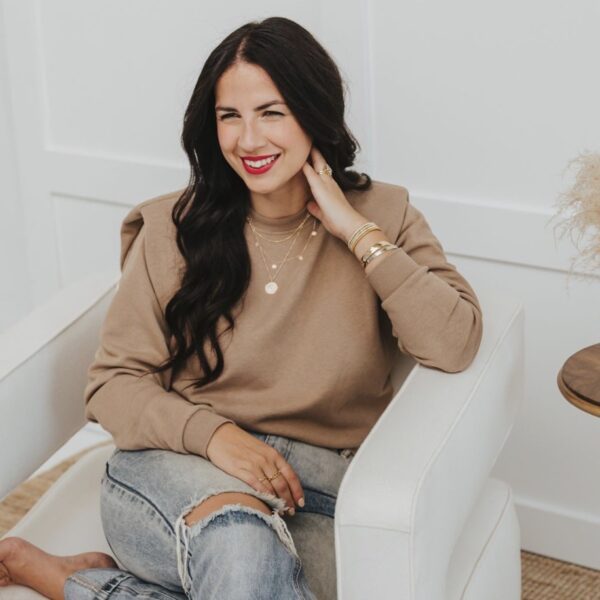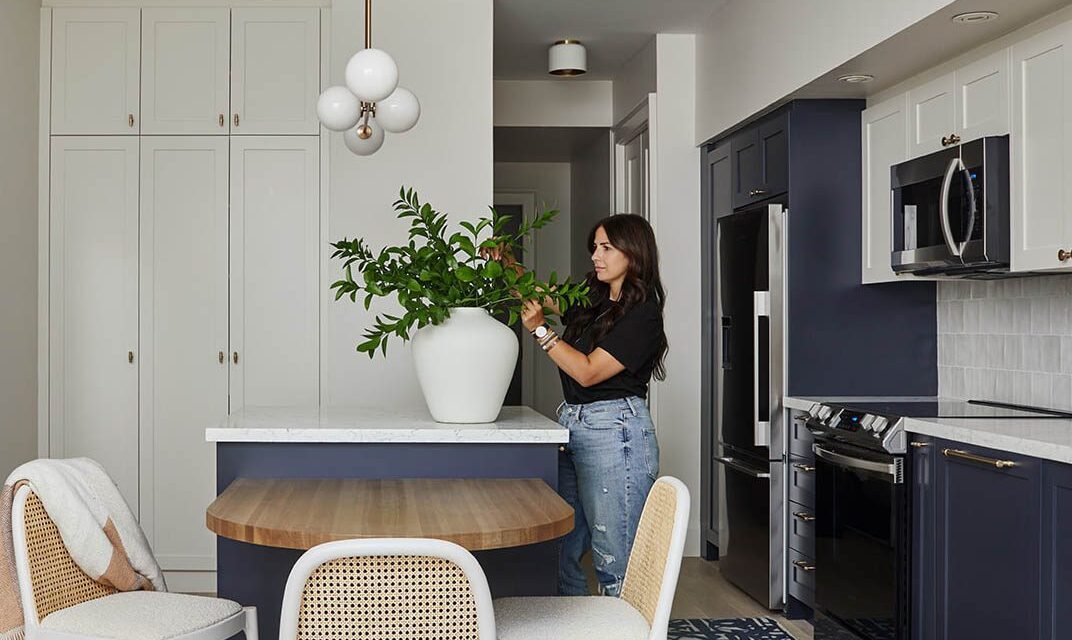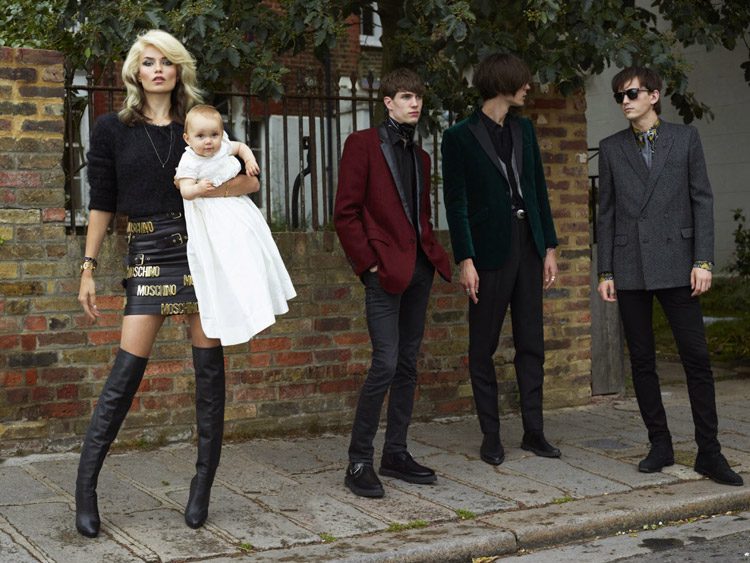Design is an art form that often doesn’t get the credit it deserves. It changes the way a space not only looks, but more importantly, how it functions and how it feels. I just moved and wanted some help to optimize my new space, so our friend and RMx Directory partner Adriana came over to give me some rapidfire design advice (a service she actually offers!). I found her insights so helpful that I’m sharing them with the class.
Pssst – Adriana has recently created an experiential gift offering just in time for the holidays.
Mention Rebel Mama Directory and get $50 off any Gift Package.

Nikita: What is a good neutral white paint for a fresh canvas feel in a low-light row house?
Adriana: My favourite go-to white is Chantilly Lace by Benjamin Moore. It’s a bright but warm white and a true neutral – it doesn’t have any overwhelming undertones that make it too warm or cool.
N: I don’t want to reconfigure any wiring (yet) but I’d like to add more ambient light in the living room and dining room, what do you recommend?
A: We love layering lighting, so if you have outlets available consider adding some table or floor lamps. But if you want an even more elevated and custom look – my favourite go-to trick is adding in a wall sconce or overhead light that you love, where you can hide a battery-operated and remote-control LED puck light, electrician free! It’s a great hack to get added lighting with only the investment of the light fixture itself. Just make sure you’re choosing a light fixture that can hide the puck entirely and gives off a good glow. Anything rounded and frosted are easy solutions for this hack!
N: I have 3 large mirrors from my previous house, where do you recommend hanging them to give the effect of more space.
A: We love hanging mirrors in rooms that are smaller in scale or with limited natural light as they help open up the spaces entirely by reflecting more light and making the spaces feel larger. Mirrors also work wonders in small condos in the peninsula kitchen-style settings.
N: I need a cheap and cheerful solution to give an old kitchen an aesthetic face lift. How do we feel about peel and stick floors, backsplashes and countertops?
A: Like any temporary aesthetic intervention, quick updates have a shelf-life but can do wonders for a space on a short-term basis. It’s important to set your expectations from the start with any Peel + stick products. In spaces like kitchens and bathrooms, Peel + Stick floor tiles are likely to start to ware and peel over time because of the water-usage within these spaces. Peel + Stick backsplashes can stand up more the test of time, and we love the simple and classic subway tile solutions as trusted and safe option. Finally for countertops – your best bet is to replace the counter top in lieu of any peel + stick product. If your countertop is in decent shape, I would first make the bigger changes in the space like the floor, the cabinets and backsplash and then reevaluate if you can live with the countertop a little longer.
N: Any hot tips for refreshing kitchen cabinets?
A: Paint goes a long way on a wall, and no less is true than for kitchen cabinets. We love refreshing existing cabinets with a fresh coat of paint or two because it provides such a huge transformation. Updating your cabinet hardware can also help elevate and modernize your cabinets. Don’t be afraid to mix knobs with pulls to really make a more updated look to your existing cabinets.
N: Are there ratios I should keep in mind when deciding what artwork to place where? How do I pick where to affix it to the wall?
A: I think the traditional rules around hanging artwork depends on personal taste and style and what else is happening in the space. Some people love asymmetry and some are symmetry-lovers. If there is architectural detailing like wainscoting and wall molding that creates a frame, more often than not your artwork should be centered within those details. For any artwork above a sofa, my recommendation is to be mindful of how you use your sofa: do you use a pillow to prop your head against the wall? Do you have tall friends and family that plunge into the sofa and whose heads might hit the artwork in the process? Try to consider how you move around the areas where you have artwork that will help you determine wall locations and distances.
N: I’m considering renovating the kitchen, bathrooms, laundry space and closets in the future, how would you recommend prioritizing those renos?
A: The answer to this question varies from homeowner to homeowner based on their lifestyle, goals for the property and investment comfort, so here are some common scenarios:
For the flipper: You will get the most bang for your buck if you focus your reno efforts on the bathrooms and kitchens. These are two of the most expensive areas in a home to renovate and therefore yield a higher investment for resale value.
For the condo dweller: Do the kitchen and the closets – those spaces are the ones you will feel impact you the most in your smaller living quarters, and will make the biggest difference in your day-to-day after the fact.
For the first-time home buyers/’this is our starter home’: I’m a firm believer that the spaces we inhabit on a daily basis impact our wellbeing the most, and so my answer to this loaded question is to choose the spaces that will alleviate any mental load or emotional cost the most – and that usually means the kitchens, bathrooms AND closets.
You spend the most time in the kitchen and the bathroom, so these spaces are well worth having to standard that you feel good in. A well designed and organized closet where you are maximizing your storage can make a bigger difference on your daily mood than you think, and are less costly to revamp.
For the house-lifers/’this is going to be our dream home’: Ok we KNOW you’re going to tackle the kitchen to make it your dream kitchen, and your bathroom with that future extension, AND add that laundry chute on the third floor. So for you I would say do it all, and do it all ONCE the way you’re dreaming about it.
N: Design is as much about how things function as how they look, what are some ways I can add functional storage space to home?
A: Storage can be a game-changer for mental load. Think of those piles of stuff you have been meaning to put away and organize but just sit in the corner, taking up spce in your hallway and in your brain everytime you see it.
Here at APD we are big fans of bite-size reno investments and we say if you’re not planning on shifting your overall layout where closets are involved, then tackle those pronto to make them the best workhorses they can be. You’ll be glad you did. Our favourite trick in older homes and condos is to demo any non-structural walls that create your closets, opening them up completely and installing custom millwork instead. With custom millwork you can make them floor-to-ceiling accessible without any awkward corners or the need for crazy arm or head-reaches, giving you full flexibility to customize how you store your life!
Some other ways to add storage to a home is through furniture, like stylish entry storage benches, cabinets and coffee tables that offer hidden compartments.
We are also believers in purging, storing your essentials and hiring a Professional organizer to guide you through how to maximize the interior real estate of your cupboards.
N: Can you explain the difference between an interior designer and an interior decorator and who to work with for what kinds of projects?
A: An Interior Designer is a professional who is qualified to design a space from start to finish (from Concept to Construction). They are responsible for space planning, material selection, millwork design and detailing, furniture and lighting design, construction drawings, and so much more. We oversee and manage the things that you don’t see: electrical systems, mechanical systems, structural systems, etc. Interior designers need to have a comprehensive understanding and knowledge of multiple-disciplines required to build a space, and our design considers everybody’s puzzle piece cohesively into one holistic vision. We are also responsible for making sure our designs are built to a high industry standard during construction. This means having a great understanding of construction assemblies and processes, working closely with contractors and trade partners along the way. And yes – we also do the ‘fun’ stuff of colour selection and styling but that is probably only 5% of the actual job. We have a great blog here that outlines just about everything an interior designer does.
You would want an Interior Designer on your side for any small to large-scale renovation project, new-build and furnishing needs.
An Interior Decorator is a professional who only deals with the decor and furnishings of a space. They can also execute space planning, but primarily work with new furnishings, colour palette and accessory design of interior spaces.
You can work with a Decorator if you’re looking for a simple refresh of a room through furniture, paint and decor only.
N:When is the best time to hire an Interior Designer for my renovation project?
A: The sooner the better, even if you’re not planning to renovate for some time. The design process takes time, and the last thing you want to do is rush the design when you’re about to make a large investment. Interior Designers should be engaged at the start of the project as we create your dream design that your A-team (Architect, Designer + Contractor) will be working towards together.
***
To learn more about Adriana and APD, visit her RMx Directory Profile or visit her website. And remember, if you want to give the gift of design to someone special this year, send Adriana an email at [email protected]. Mention Rebel Mama Directory and get $50 off any Gift Package.
*
KEEP UP WITH US ONLINE
@THEREBELMAMA
*
LISTEN TO OUR PODCAST
*
CHECK OUT OUR (BEST-SELLING) BOOKS









From Our Comments